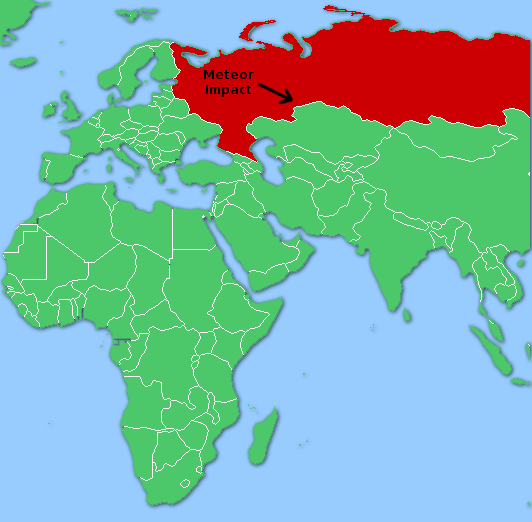
Circle the area on this map

C. The 1908 event flattened millions of trees over 800 square miles in a remote, largely uninhabited area of central Siberia about 1,200 miles away from Friday’s explosion. Siberia extends over almost all of north Asia and covers roughly 77 percent of Russia's total territory.
B. The asteroid streaked over the Indian Ocean at an altitude of about 17,200 miles from the surface -- closer than many telecommunications satellites. If that asteroid had hit Earth, NASA scientists say it would have released the energy of 2.5 million tons of TNT – about ten times the power of the Russian strike.
C. The diameter of the Chicxulub Crater is estimated to be from 106 to a whooping 186 miles, which if proved would make it the largest known impact site. While craters are easy to see on the surface of the Moon, erosion makes it difficult to identify most Earth craters.
D. Scientists believe the impacts created great heat and pressure to form diamonds, shattered deep rock formations to allow oil to rise and fill the cracks, and released the Earth's magma to fill deep craters with metals like gold, copper and nickel.